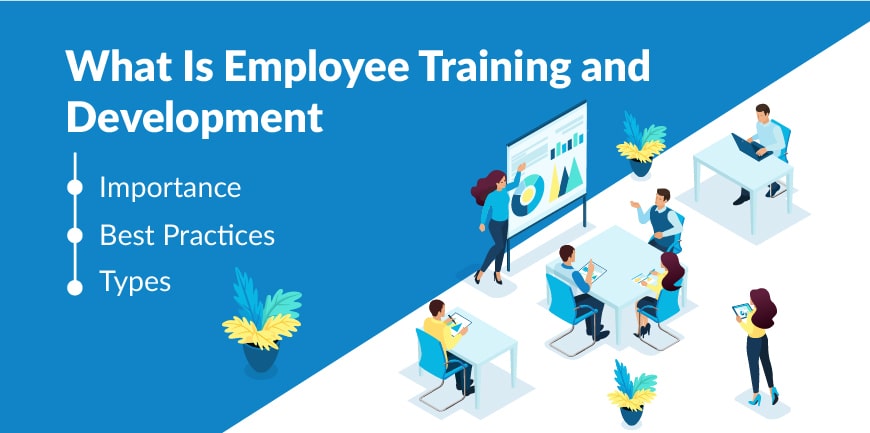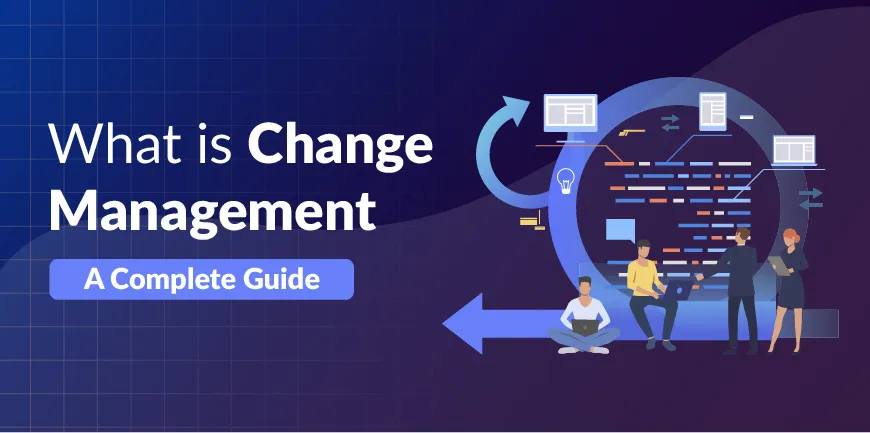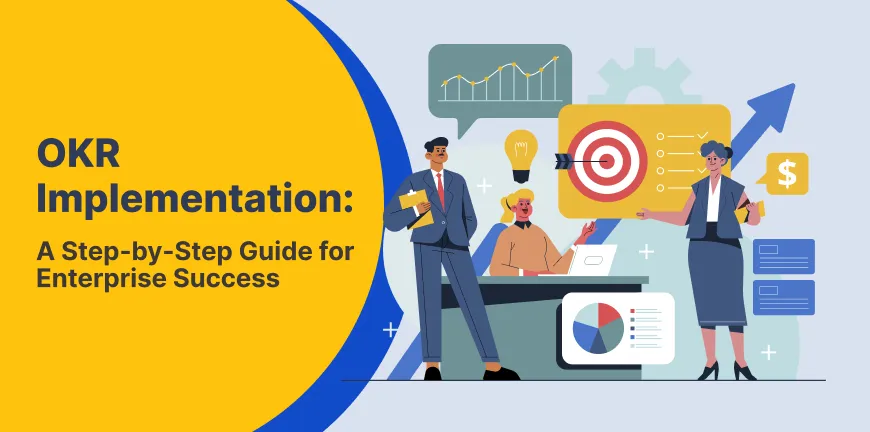
10 Staffing Challenges and How to Solve them?
24/04/2025
10 Key Components of Staffing: Everything You Need to Know
28/04/2025- What is Employee Training and Development? Meaning & Definition
- Why is training and development important?
- What Are the Key Benefits of Employee Training and Development?
- What is the Impact of Training & Development on Employees?
- What are the Different Types of Training and Development?
- Training and Development Strategies for Employee Growth
- What Are the Examples of Effective Employee Training Methods?
- How Can Organizations Build Employee Training and Development Programs?
- What are the Current trends in training and development?
- What are the Training and Development Challenges?
- Best Practices and Tips for employee training and development
- How ALP Can Help You with Employee Training & Development?
- Frequently Asked Questions (FAQs)
- 1. What is employee training and development?
- 2. What are the different training and development activities for employees?
- 3. What are the challenges and costs of training and development?
In the current business landscape, most companies are facing the issue of employee engagement and retention. The most likely culprit for this is a lack of impetus for employee training and development. Studies and surveys have shown that companies with strong emphasis on employee training and development programs have higher employee retention rates and business growth than companies that are lacking in it.
Let’s crack the code and help companies and employees gain a fresh perspective on the importance of staff training and development.
What is Employee Training and Development? Meaning & Definition
Employee training and development an essential elements of a company’s growth initiatives. Staff training and development definition states that ” It is an organised set of activities and programs designed and taught by professionals with specialised expertise to help employees of an organisation acquire new skills or improve their existing skills, benefiting both employer and employees and creating a win-win situation”.
Employee training is a formal approach where experienced employees or third-party training experts like ALP Consulting will prepare a structured program that employees must learn and implement in their existing tasks to improve their current performance and contribute towards improving the business operations. Ex: Compliance training, leadership development, product training, safety and compliance training, software training, soft skills training, etc.
On the other hand, development is a broader term that encompasses various initiatives taken by organisations to help employees move forward in their careers and accept new roles and responsibilities. Some of the activities involved in employee development include mentoring and coaching, corporate training, leadership training, etc.
Why is training and development important?
There is a saying that “If you feed a person with a fish, he is happy for one day, but if you teach a person how to fish, then he never goes hungry and is happy for a lifetime”. The same applies to the role of employee training and development. The training and development activities for employees play a key role in improving job satisfaction, creating career advancement opportunities, building trust, enhancing productivity, and increasing employee retention rates.
By understanding the importance of staff training and development, both employers and employees can proactively participate in creating a positive work culture that fosters growth and rewards excellence. Through effective employee training and development, companies can significantly reduce employee turnover and improve their talent ROI.
What Are the Key Benefits of Employee Training and Development?
Employee engagement training and development can derive several advantages for companies in terms of improving business outcomes and employee satisfaction. Here are the key benefits of staff training and development:
1. Improved Performance
When employees receive regular training from experts, it improves their task management skills and gives them a fresh perspective on how to tackle problems and overcome them in a simpler way. This approach will improve their performance and productivity, contributing to the overall success of their organisation.
2. Streamlined processes
By implementing an effective staff training and development strategy, most of the business operations can be streamlined. The employees will develop a proactive mindset during the training sessions, and their learning can be used to remove discrepancies and optimise the existing processes, leading to better business outcomes.
3. Competitive Edge
The main factor that gives any company an edge over its competitors is the ability of the workforce to adapt to changes and deliver great results no matter what. Effective training and development activities for employees can improve their abilities to handle changes positively, leverage technology smartly, and make informed decisions, thereby giving a competitive edge to the organisation.
4. Employee retention
Most companies face a challenge in recruiting and retaining talent, and one way to combat this is to create a solid career development program. This will increase trust and loyalty among employees since they realise that their company is leaving no stone unturned in helping them achieve substantial career growth. This staff training and development strategy will reduce attrition rates and increase employee retention, thereby increasing business growth and brand reputation.
What is the Impact of Training & Development on Employees?
The impact of training and development programs for employees on their performance is palpable. Some of the significant changes brought about by training and development in employee performance are increased productivity and reduced errors, and hence improved quality of work.
Employee performance reviews are a testament to how good training and development programs can be for employee success at the workplace. Employee training and development programs can also improve employee engagement and may even have a positive impact on their lives, restoring a healthy work-life balance, if employees are trained on how to achieve it.
What are the Different Types of Training and Development?
Companies and their HR teams create various types of staff training and development programs based on business requirements and employee career growth initiatives. Here are the typical training programs included in the staff training and development plan template of most organisations operating in India:
1. Technical Training
Based on the job role and type of industry, training in a specific technology might be required to improve the speed and quality of a task. Ex: In warehouse management, employees may be given specific training on SAP technology to manage logistics and delivery in an organised way instead of doing manual entries.
2. Quality training
This involves educating and creating awareness among employees on how to maintain the quality of their work, products, and equipment. Ex: ISO standards training will help employees on how to maintain product quality and mitigate risks within the workplace. Quality training can be provided by an in-house team or by an external expert like ALP Consulting for better outcomes.
3. Leadership development program
This will help employees move up in their careers from an executive level to a leadership group level. Additionally, for employees already at higher levels, these programs will help them hone their management skills to a higher level so that they can set a great example for junior employees on how to achieve excellence.
4. Safety training
It will help employees develop skills and expertise to create a safe working place and prevent accidents. Ex: fire drills, CPR training, administering first aid, etc.
5. Soft skills training
It will help in improving an employee’s overall personality, communication, problem-solving skills, customer handling, confidence, leadership skills, etc. Ex: emotional intelligence improvement training, teamwork training, leadership skills enhancement training, etc.
6. Compliance training
Informing employees of the organisation’s regulations, policies, or adherence to laws is called compliance training. These policies could be both internal corporate policies that they must conform to or statutory policies that they must follow.
7. Managerial training
Managing others at the workplace requires great skill. As the famous saying goes, “While leaders do the right thing, managers do things right!” A manager’s job is about managing resources effectively, delegating to the right extent, being accountable, and mentoring the employees if need be. They must be trained on social-emotional management at the workplace, too.
8. Onboarding training
In onboarding training, the employee is trained on how to manage the day-to-day work that they must do. It also includes the necessary communication and other soft skills they must master to ensure that they fit into the new workplace.
Training and Development Strategies for Employee Growth
A game of football without a clear plan of execution will suffer even if every player on the team is genuinely talented. The same goes for workplace training and development programs, also. If your training and development program is not driven by well-thought-out strategies, it will be akin to shooting in the dark; you will not achieve your business goals. Here are some employee development training ideas.
1. Encourage self-direction in learning
You cannot have motivation if it does not come from within. Sometimes you know what’s right, but your employees must agree too. Employees decide how they want to progress in their career, so the learning must also be by their choice. AI-based learning tools can help identify what skill gaps exist and how to address them based on the inputs they receive and the interactions with the employees.
Content tagging can recommend relevant and personalized content, and an LMS can help auto-enroll employees in learning pathways that are beneficial to them. Link the content in the learning pathway to business objectives for greater benefits.
2. Use an on-demand strategy
Have a vetted catalogue of content ready for the employee to access. If you can build a knowledge base for employee training, that would be a game-changer for everyone in your office. If this knowledge base is always available and online, then it would be even more convenient, as it will allow employees to work from home as well.
3. Introduce microlearning
A study by Deloitte revealed that the average worker has only 24 minutes to devote to learning a week. Micro-learning uses infographics, short videos, and recordings, etc. to deliver useful content that will assist in their jobs.
Use one short video or recording to focus on a single topic. Covering multiple topics in the span of a few minutes is not advisable and does not end up being a good use of the employee’s training time.
4. Offer immersive learning programs
Once the skills have been acquired, they need to be applied too, and it must be possible for employers to test the waters and see if the training has worked.
Immersive learning can help with this. Use case studies or client experience videos to help employees understand the real-world application of the skills they have acquired.
You can also use VR, which is a very engaging and tech-enabled type of training that can deliver lifelike experiences and problem-solving spaces for your employees. The level to which trainees will engage with the training will depend on how close it is to real-world conditions.
The 70/20/10 model of learning postulates that 70% of learning happens through on-the-job experiences (experiential learning), 20% through social interactions with peers and mentors, and only 10% through a formal course. Immersive learning helps bring the same benefits of experiential learning to each employee.
5. Gamify learning pathways
What do employees like the most in a workplace that they would share with others? A celebration of their achievements. By adding gamifying elements to learning pathways, you can make it more competitive for employees even when they are training, urging them to go for higher goals.
Some ways to introduce gamification in the learning pathway for each employee are to introduce a point and ranking system, with a leader board, and the possibility to earn badges for every achievement, and the freedom to share their achievements and these badges online. While adding gaming elements, always also analyse the psychological impact of introducing them.
6. Optimize post-training evaluations
Your training program cannot remain the same; it needs to improve. For this post, training evaluations become essential.
Once each round of training is completed, conduct a survey where you ask both open-ended as well as other questions to determine whether the training program is achieving its goals from the employee’s perspective.
You can even use AI-based training evaluation tools to gain insights into actual performance improvement and how much of that can be correlated to the training that was imparted.
7. Create a learning culture
Everyone at the workplace must be open to learning, and learning itself must be seen as a way of improvement rather than a sign of weakness. For this, managers must participate in training and development programs for employees, not only assisting in their creation but actively becoming learners too. It requires buy-in from the top leadership, too, who can sanction the allocation of funds for it.
Devoting as much as 20% of the time in the workplace to continuous learning could be very rewarding for the business as employees learn new skills, apply them, and solve problems faster. The overall time reduction would justify the time spent on learning. The learning can be linked to performance reviews, too, where you recommend a certain learning pathway following a review.
What Are the Examples of Effective Employee Training Methods?
Organisations must create effective training and development methods for employees to ensure maximum participation and the best outcomes. Here are a few employee training and development examples that have proven to be effective:
1. Instructor-Led Training (ILT)
It is one of the most effective employee training and development methods that involves maximum human interaction. It brings both experts and trainees together where there will exchange of ideas, thoughts, concepts, and use cases, creating an interactive environment. This type of staff training and development method promotes active participation, creates open communication, and offers real-time feedback, making it extremely effective.
2. On-The-Job Training (OJT)
There is no alternative to hands-on experience, especially when it comes to performing physical and technical tasks. OJT helps employees get fast-tracked to performing critical tasks, leading to more productivity and business growth in less time.
3. eLearning
It has become a game-changer in creating effective staff orientation training and development since it facilitates unlimited access to training materials, and employees can learn at their own pace and revisit the training sessions multiple times. This model reduces the cost of staff training and development significantly and is ideal for companies with large staff and working remotely.
How Can Organizations Build Employee Training and Development Programs?
To build effective employee training and development programs, organisations must incorporate the following elements:
1. Set attainable goals
As a part of the staff training and development strategy, organisations must set attainable goals and objectives that align with business needs and operational demands.
2. Prioritize flexibility and personalisation
There is a saying that “no size fits all” and it holds good for companies using only one training method for all employees. Organisations must prioritize flexibility and personalisation and adopt different training methods such as eLearning, instructor-led training, simulations, etc., for better employee engagement.
3. Encourage and invest in external training programs
Companies must encourage employees to attend seminars, workshops, and conferences conducted by industry experts outside the organisation. This will be refreshing and help employees build new perspectives that will motivate them to improve their performance.
4. Reward Active participation
Employees who actively participate in training and development programs must be recognised and rewarded with incentives and bonuses. This will increase participation and motivate employees to showcase their newly acquired skills by performing better and bringing more business growth.
5. Gather employee feedback
Companies should gather employee feedback after every training and development session and make improvements accordingly for future sessions.
6. Review and upgrade
Companies must regularly review staff training and development programs to evaluate their effectiveness and assess if they are providing the desired outcomes. Analysing training data and identifying areas that need improvement is crucial for making the training and development programs more effective and aligned with the latest trends.
What are the Current trends in training and development?
Here are the employee training and development trends in 2025:
1. Generative AI in Employee Training
Generative AI is making rapid strides in all aspects of business, and employee training and development is no exception. Corporate trainers and experts are leveraging Generative AI’s writing capabilities at scale and creating personalised learning experiences for employees across all domains.
2. Reskilling and Upskilling
Companies are prioritising skill development in 2025 to stay ahead in the business arena. The growing skill gap in adapting to technological advancements and disruptions has become troublesome, and companies are organising upskilling and reskilling programs to address these challenges.
What are the Training and Development Challenges?
The major challenges encountered by companies regarding employee training and development in HRM include:
- Determining specific training needs matching to business goals can be complex and can lead to resource wastage.
- Allocating resources internally for carrying out training and development activities for employees can be challenging, especially for small to medium-sized companies.
- Finalising the best training and development methods for employees can be difficult since each employee responds differently, and creating a common ground for the best outcomes is a herculean task.
- Keeping employees engaged in staff training and development activities can be challenging since employees have to juggle between their regular tasks, and attending these sessions can lead to ineffective learning.
- Measuring the impact of employee training and development is a significant challenge since quantifying the outcomes of training against business outcomes directly is not possible.
Best Practices and Tips for employee training and development
Companies must know the clear difference between employee training and employee development to create distinctive programs that serve the purpose of employee upskilling and foster career growth simultaneously. Here are the best practices and tips that companies must follow to create long-term success and business growth through employee training and development.
- Clearly define the objectives of staff training and development programs and seek leadership support for the best execution.
- Appoint a strong employee training and development program manager with substantial experience and expertise to oversee all the training and development activities for employees. The manager can bring a sense of responsibility and ensure both employees and stakeholders take training and development programs seriously, leading to the best outcomes.
- Add flexibility and personalisation to training and development methods for employees to increase engagement.
- Promote your training and development among your employees and clearly make them understand the benefits and rewards of undergoing these training sessions.
- Ensure both trainers and employees are on the same page when it comes to the objectives and goals of the employee retention training and development programs.
- Leverage technology to measure the KPIs of employee training and development programs and make improvements based on the results.
How ALP Can Help You with Employee Training & Development?
Employee training and development is an ongoing process and requires a lot of resources and time investment to achieve long-term success. Creating an in-house team for training and development may not be feasible, as internal team members have various responsibilities, and managing training & development activities may not yield the desired results.
Therefore, outsourcing the entire responsibility of creating, managing, and reviewing employee training and development programs can be a game-changer.
ALP Consulting, a leading employee training and development agency in India, offers end-to-end staff training and development programs from orientation and onboarding training to leadership development programs.
We have a team of seasoned professionals with specialised expertise who can design comprehensive employee training and development programs based on client needs and business goals. We utilise different training and development methods for employees to ensure better engagement, flexibility, and active participation.
The various employee training and development programs we offer include:
- Orientation and Onboarding
- Professional/cognitive Skills Enhancement
- Technical Skills Training
- Leadership Development
- Compliance and Regulatory Training
- Soft Skills and Interpersonal Skills
- Managerial and Supervisory Training
- Career Development and Growth
- Technology Training
- Innovation and Creativity Workshops
Alp Consulting also offers customised employee training and development based on the client’s goals and requirements. Connect with us if you need services related to staff training and development.
Frequently Asked Questions (FAQs)
1. What is employee training and development?
Employee training and development means is pretty straightforward, and it states that ” A set of training and development programs designed by experts to improve the skills and knowledge of employees, leading to better productivity and performance.
These initiatives create a win-win situation for both employees and employer,s as employees can achieve career growth and employers can enjoy more success in terms of revenue and enhanced brand reputation.
2. What are the different training and development activities for employees?
The different training and development activities for employees include Onboarding Training, Orientation Training, Compliance Training, Safety Training, Product Training, technical training, soft skills training, and many more.
3. What are the challenges and costs of training and development?
The challenges encountered by companies during the creation of a staff training and development plan include budget constraints, lack of employee engagement, resource limitations, finalising the learning method suitable for all employees, adapting to evolving technologies, measuring training effectiveness, etc. The costs of training and development may vary based on the type of training method adopted, internal or external training experts, the size of the organisation, the extent of technology assistance needed, and many other factors.
4. What is HR’s role in training and staff development?
HR team plays a major role in employee training and development as they identify training needs, ensure maximum participation by motivating the employees, monitor the progress, and generate reports for management regarding the effectiveness of the training and development programs.
5. What is the difference between employee training and management development?
The key difference between employee training and management development is that employee training focuses on improving employee skills to perform current tasks more effectively, whereas management development is an ongoing process of improving an employee’s overall capabilities, like leadership, problem-solving, critical thinking, decision-making, etc.
6. How can training and development improve employee retention?
Employee training and development can positively impact employee retention rates as employees feel their career growth is prioritised, creating a great work culture. Other aspects that increase employee retention rates are job satisfaction, better performance, high morale, reduced turnover, etc.
7. What are some examples of employee training activities?
Some of the employee training and development examples include onboarding training, microlearning, mentoring, simulations, DEI training, safety training, gamification, etc.
8. What are staff training and development needs?
The staff training and development needs include personal development, improving job-specific skills and knowledge, organisational goals and objectives, etc.
9. What is a staff training and development plan template?
A staff training and development plan template is a structured outline of all training and development activities for employees that need to be carried out to achieve the best outcomes in terms of employee skill development and organisational growth.
Contact Us For Business Enquiry

Suresh Ramkrishna
Suresh Ramkrishna is the Operations Manager at Alp Consulting Ltd., with over 30 years of extensive experience spanning recruitment operations, sourcing, supply chain management, and client relations. At Alp, he leads the Search & Staffing Practice, specializing in bilingual and niche skill hiring while overseeing Japanese language and TITP (Technical Intern Training Program) initiatives. He also manages NAPS (National Apprenticeship Promotion Scheme) training programs, fostering skill development and workforce readiness across industries. Previously, he spent over two decades in the apparel export industry, managing vendor development and international sourcing for top global brands. Suresh’s leadership blends strategic talent acquisition with operational excellence across diverse industries.




